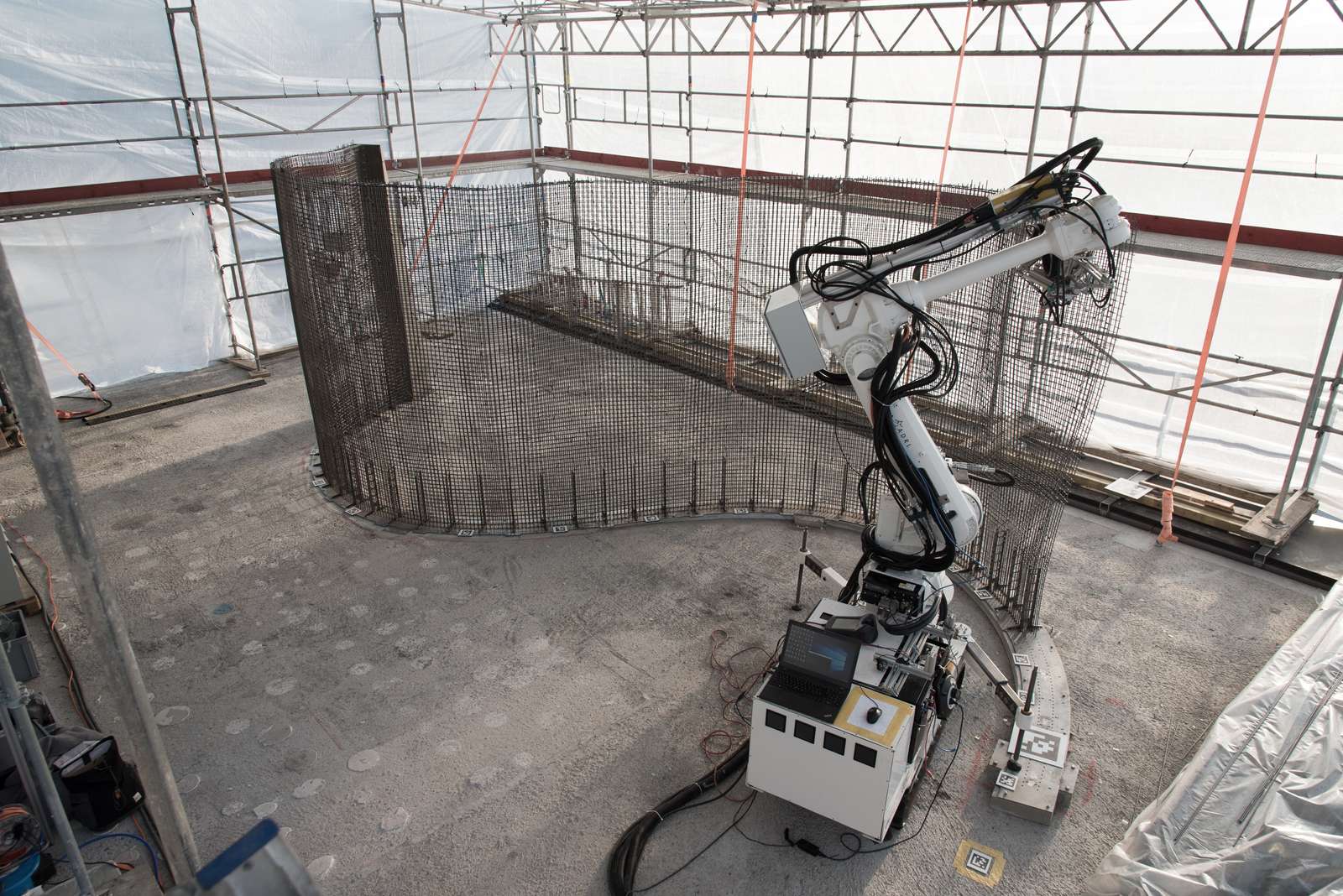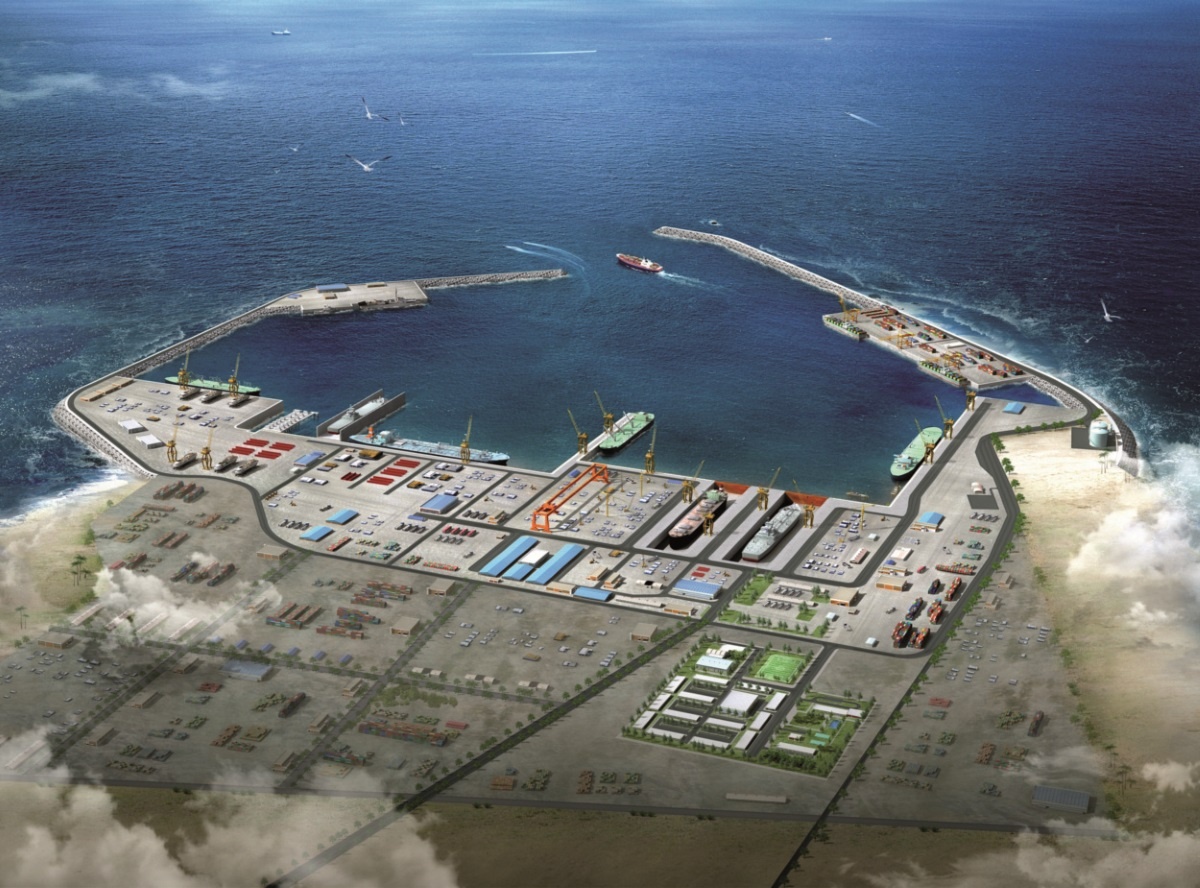Flat roofs in Germany cover an area of about 1.2 billion square meters. A large portion of this has no function other than capping off the top of the building. There are many ways that architects and engineers can better utilize flat roofs. In this article, you will learn how additional living space, sports fields, roof gardens, water areas and small power stations can be created on flat roofs.
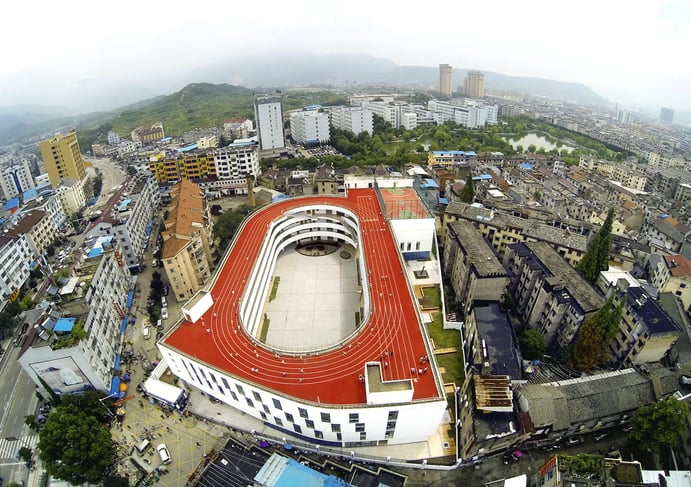
© Yu Xu; Tiantai No.2 Primary School
New living space on the roofs in the city
According to a study by the Technical University of Darmstadt and the Pestel Institute Hannover from 2016, 1.5 billion new apartments could be built on existing buildings. This is of particular interest in metropolitan areas and major cities where living space is scarce and expensive. Apartment buildings built between 1950 and 1990 in particular are considered for this heightening in roof space. They alone allow for 1.12 million new residential units with an average living space of 85 square meter each.
The advantages are obvious. Urbane space can be condensed upwards. At the same time, architectures and engineers can build in a cost-saving manner, since they are using existing infrastructures, such as streets and sewage water systems. However, cities and municipalities must adjust the building regulations for this and create financial incentives. This is already occurring in France. With the help of the social organization "Les Toits du Monde," real estate owners are able to have so-called roof boxes built.
Recharge using the power of the sun
Another way to sensibly utilize flat roofs is by using photovoltaic and solar heating systems. They can be installed directly on the roof, for example on the roofs of office buildings and industrial halls. The electricity generated by the PV systems or the hot water generated by solar heating can be used for the operation of the respective building, thus reducing the overall energy consumption. This increases the energy efficiency and has a positive effect on the carbon footprint.
Sports and games at great heights
Whether in Saxon Bautzen or in Chinese Tiantai, students can be active on the roof of their school building. For example, the architectural firm LYCS Architecture built an elementary school with a stadium, a basketball court and a 200-meter long track on the roof in China in 2014. A sufficiently large green area was missing in the densely developed area. That is why the office designed the sports field on the roof and thus had more building ground available for the oval building, which is why they were able to reduce the number of stories. The facility thus also harmonizes better into the cityscape.
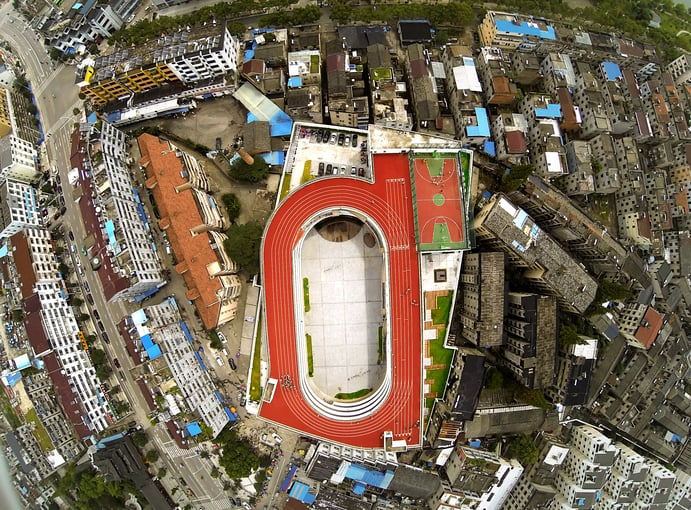


© Yu Xu; Tiantai No.2 Primary School
From pond system to swimming pool
Flat roofs can not only offer space for people, but also for plants and animals. Instead of building a ground-level biotope, pond systems can be constructed at height, such as in combination with a roof garden. In addition, seasonal water areas, swimming pools as well as constructed wetlands are possible.
The hotel Marina Bay Sands in Singapore (photo above), for example, offers its guests an infinity pool with a breathtaking view at 200 metersheight, the highest pool in the world.
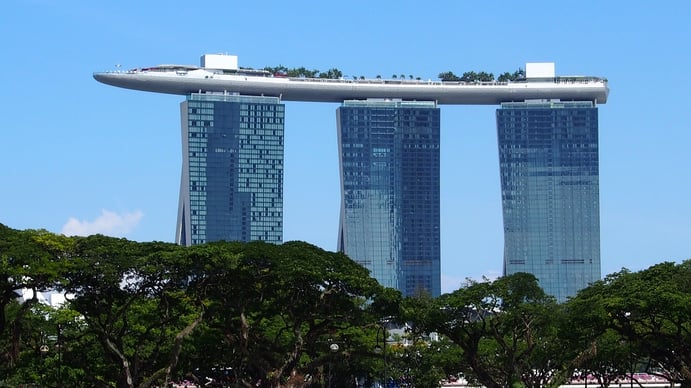
© Pixabay / david17, http://pixabay.com/de/marina-bay-hotel-dachgarten-singapur-1194479; Marina Bay Hotel in Singapur
Roof greening for the climate
A planted flat roof also offers an attractive view for the surrounding neighbors living nearby. In Copenhagen, one roof garden rises up high in the middle of a densely-developed quarter. In addition to a playground for children, a viewing platform and an outdoor kitchen with a grill, the office JDS Architects has integrated green space and a wooden deck.
These planted green flat roofs do not just have a purely aesthetic function: The plants cool down the building in direct sunlight and store rainwater, which in turn relieves the sewage water systems.
Innovative flat roof utilization for a sustainable urban architecture
There are countless design options for flat roofs. Whether for gaining new living space, improving the energy balance or environmental protection, flat roofs thus fulfill many more functions than just topping off a building. The innovative project "Gwanggyo Power Center" in South Korea how important in particular green roofs can be for sustainable urban planning.
